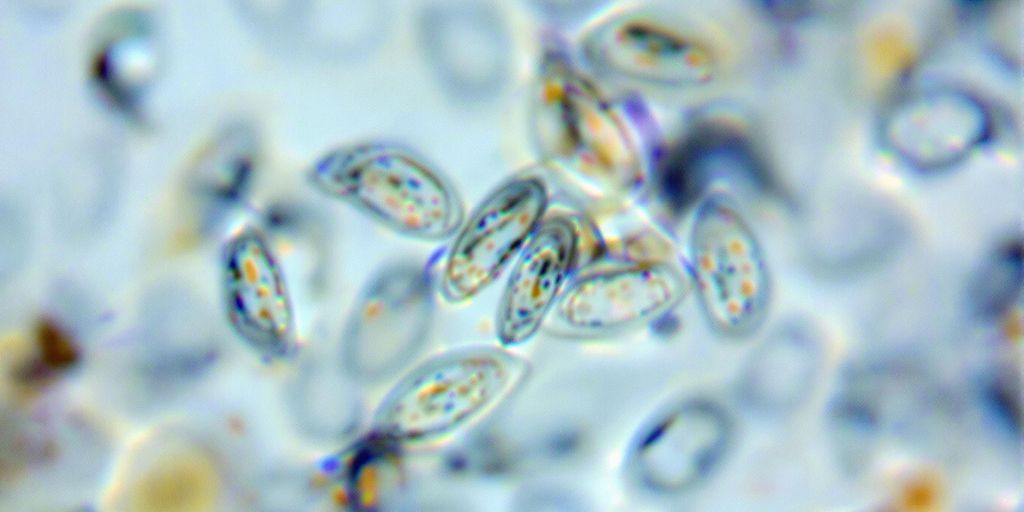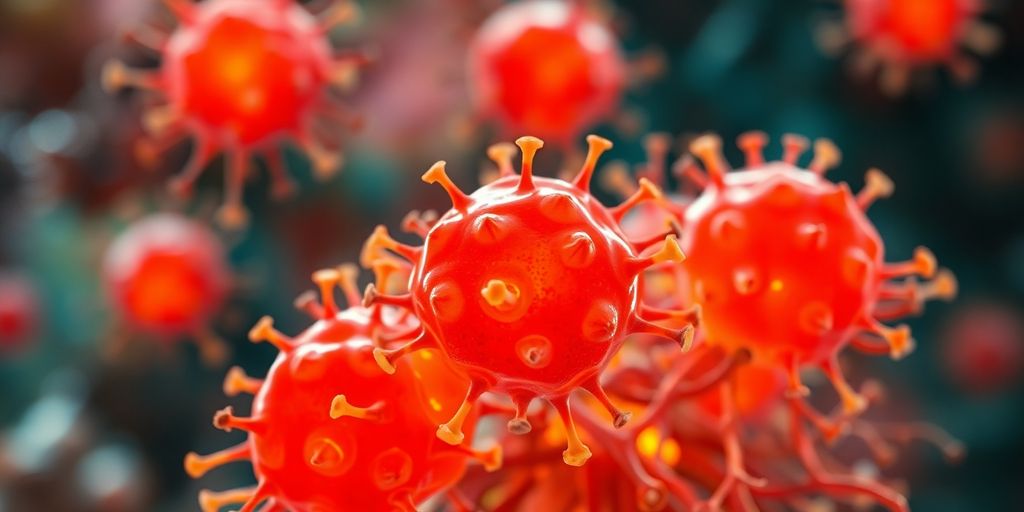Understanding Mitose: The Key Process of Cell Division

Mitose is a vital process that allows cells to divide and reproduce. Understanding mitose helps us grasp how living things grow, heal, and maintain their bodies. This article will cover the basics of mitose, its phases, its regulation, and its significance in various organisms and applications.
Key Takeaways
- Mitose is the process of cell division that is essential for growth and repair.
- There are several phases in mitose: prophase, metaphase, anaphase, and telophase.
- Checkpoints help ensure that cells divide correctly and prevent mistakes.
- Different organisms have unique ways of undergoing mitose, such as in plants and animals.
- Understanding mitose can lead to advancements in medicine and technology.
The Basics of Mitose
Definition and Importance
Mitosis is a vital process that allows cells to divide and create new cells. This process is essential for growth, repair, and reproduction in living organisms. During mitosis, the genetic material is duplicated and evenly distributed to ensure that each new cell has the same information as the original cell.
Historical Background
The study of mitosis has a rich history, beginning in the 19th century. Key milestones include:
- Discovery of Chromosomes: Scientists first identified chromosomes in the 1880s.
- Understanding Cell Division: By the early 1900s, researchers had mapped out the stages of mitosis.
- Modern Techniques: Advances in microscopy have allowed for deeper insights into the mitotic process.
Key Terminology
To understand mitosis better, here are some important terms:
- Chromatids: The two identical halves of a duplicated chromosome.
- Cytokinesis: The final step of cell division, where the cytoplasm divides.
- Prokaryotes: Simple cells that divide differently than eukaryotic cells, which undergo mitosis.
Mitosis is not just about division; it is a complex and regulated process that ensures life continues through new cells.
The Phases of Mitose
Prophase: Preparing for Division
During prophase, the cell gets ready to divide. The chromosomes become visible as they condense and thicken. The nuclear membrane starts to break down, and the spindle fibers begin to form. This is a crucial step in ensuring that the chromosomes are properly organized for the next phase.
Metaphase: Aligning Chromosomes
In metaphase, the chromosomes line up in the middle of the cell. This alignment is important because it ensures that each new cell will get the right number of chromosomes. The spindle fibers attach to the centromeres of the chromosomes, preparing them for separation.
Anaphase: Separating Chromatids
Anaphase is when the sister chromatids are pulled apart. The spindle fibers shorten, pulling the chromatids toward opposite ends of the cell. This ensures that each new cell will have an identical set of chromosomes. This stage is vital for genetic stability.
Telophase: Completing the Process
In telophase, the cell starts to finish dividing. The chromatids reach the opposite poles, and a new nuclear membrane forms around each set of chromosomes. The chromosomes begin to de-condense back into chromatin, preparing for the final step of cell division.
The phases of mitose are essential for proper cell division and play a key role in growth and repair in living organisms.
| Phase | Key Events | Importance |
|---|---|---|
| Prophase | Chromosomes condense, spindle forms | Prepares for alignment |
| Metaphase | Chromosomes align at the cell’s equator | Ensures equal distribution |
| Anaphase | Sister chromatids separate | Maintains genetic stability |
| Telophase | Nuclear membranes reform, chromosomes de-condense | Completes the division process |
Understanding these phases helps us grasp how cells reproduce and maintain life. Each phase has its own unique role, making mitosis a fascinating process to study!
Regulation of Mitotic Processes
Role of Checkpoints
Checkpoints are crucial in the cell cycle, acting as safety nets to ensure everything is on track before moving to the next phase. They help prevent errors that could lead to problems like cancer. The main checkpoints include:
- G1 Checkpoint: Checks for DNA damage and cell size.
- G2 Checkpoint: Ensures all chromosomes are copied and that the DNA is undamaged before entering mitosis.
- M Checkpoint: Confirms that all chromosomes are properly aligned before separation.
Molecular Signals and Pathways
Cells use various signals to control mitosis. These signals can be:
- Cyclins: Proteins that help move the cell through the cycle.
- Cyclin-dependent kinases (CDKs): Enzymes that activate or deactivate other proteins by adding phosphate groups.
- Growth factors: External signals that tell cells to divide.
Impact of External Factors
External factors can also influence mitosis. Some of these include:
- Nutrients: Cells need enough food to grow and divide.
- Temperature: Extreme temperatures can slow down or stop cell division.
- Radiation: High levels can damage DNA, affecting the cell cycle.
Understanding how these processes work is essential for grasping how cells grow and divide. By studying these regulations, scientists can find ways to treat diseases related to cell division.
Mitose in Different Organisms

Mitotic Variations in Plants
In plants, mitosis has some unique features. Plant cells have a rigid cell wall that affects how they divide. Here are some key points about plant mitosis:
- Cell Plate Formation: Instead of pinching in, plant cells form a cell plate that eventually becomes the new cell wall.
- Chloroplasts: These organelles are also replicated during mitosis, which is important for photosynthesis.
- Variability: Different plant species may show variations in their mitotic processes.
Animal Cell Division
Animal cells divide differently from plant cells. Here are some important aspects:
- Cleavage Furrow: Animal cells form a cleavage furrow that pinches the cell into two.
- Centrioles: These structures help organize the mitotic spindle, which is crucial for chromosome separation.
- Cell Cycle Regulation: Animal cells have strict controls to ensure proper division, preventing issues like cancer.
Unique Cases in Fungi and Protists
Fungi and protists exhibit interesting mitotic processes:
- Fungi: Some fungi undergo a type of mitosis called "closed mitosis," where the nuclear envelope remains intact during division.
- Protists: These organisms can show a variety of mitotic methods, including both open and closed mitosis.
- Adaptations: Many protists have adapted their mitotic processes to suit their environments.
Understanding the differences in mitosis across various organisms helps us appreciate the diversity of life. Mitosis is a fundamental process that allows for growth and reproduction in all living things.
In summary, while the basic concept of mitosis remains the same, the specific processes can vary significantly among plants, animals, fungi, and protists. This diversity is essential for the survival and adaptation of different species.
Applications and Implications of Mitose

Medical and Health Implications
Mitose plays a crucial role in health and medicine. Understanding how cells divide helps scientists develop treatments for various diseases. Here are some key areas where mitose is important:
- Cancer Research: Studying mitosis helps in understanding how cancer cells grow and divide uncontrollably.
- Regenerative Medicine: Knowledge of mitosis aids in developing therapies to repair damaged tissues.
- Genetic Disorders: Insights into mitotic errors can lead to better understanding and treatment of genetic diseases.
Biotechnological Applications
In biotechnology, mitose is essential for various applications. Some examples include:
- Genetic Engineering: Scientists use mitosis to create genetically modified organisms (GMOs).
- Cell Culture: Mitosis is vital for growing cells in labs for research and drug testing.
- Stem Cell Research: Understanding mitosis helps in harnessing stem cells for medical treatments.
Research and Future Directions
The study of mitose continues to evolve, leading to exciting possibilities:
- New Therapies: Ongoing research may lead to innovative treatments for diseases related to cell division.
- Advanced Techniques: Improved methods for studying mitosis can enhance our understanding of cellular processes.
- Interdisciplinary Approaches: Combining biology with technology can open new avenues in mitotic research.
Understanding mitose is not just about cell division; it is about unlocking the secrets of life itself.
In summary, the study of mitose has significant implications in medicine, biotechnology, and research, making it a vital area of study for future advancements. The mitotic spindle is a key component in this process, as all eukaryotic cells prepare for division by forming this structure, which is made from microtubules and various proteins.
Common Disorders Related to Mitose
Cancer and Uncontrolled Cell Division
Cancer is one of the most serious disorders linked to mitosis. In cancer, cells divide uncontrollably, leading to tumors. This uncontrolled growth happens when the normal checkpoints in the cell cycle fail. Here are some key points about cancer related to mitosis:
- Cancer cells ignore signals that normally stop cell division.
- They can invade nearby tissues and spread to other parts of the body.
- Treatments often target rapidly dividing cells, which include cancer cells.
Genetic Disorders
Genetic disorders can also arise from problems during mitosis. When chromosomes do not separate correctly, it can lead to conditions such as:
- Down syndrome, caused by an extra copy of chromosome 21.
- Turner syndrome, where a female has only one X chromosome.
- Klinefelter syndrome, where males have an extra X chromosome.
Impact on Aging and Degeneration
As we age, the efficiency of mitosis can decline, leading to various degenerative diseases. This can result in:
- Slower healing processes.
- Increased risk of age-related diseases like Alzheimer’s.
- Overall decline in tissue regeneration.
Understanding these disorders helps scientists develop better treatments and preventive measures. Mitosis is crucial for healthy growth and repair, and any disruption can lead to serious health issues.
Technological Advances in Studying Mitose
Microscopy and Imaging Techniques
Recent advancements in microscopy have greatly improved our understanding of mitose. Techniques such as:
- Fluorescence microscopy: Allows scientists to see specific proteins in cells.
- Live-cell imaging: Enables observation of mitotic processes in real-time.
- Electron microscopy: Provides detailed images of cell structures at a very high resolution.
These methods help researchers visualize the stages of mitose and understand how cells divide.
Genetic and Molecular Tools
The development of genetic tools has transformed how we study mitose. Some key tools include:
- CRISPR-Cas9: A powerful method for editing genes, allowing scientists to study the effects of specific genes on cell division.
- RNA interference (RNAi): Used to silence genes and observe changes in mitotic behavior.
- Reporter genes: Help track the activity of genes during mitosis.
These tools enable researchers to manipulate and observe the genetic factors involved in cell division.
Computational Models and Simulations
Computational models are becoming essential in studying mitose. They allow scientists to:
- Simulate the cell cycle and predict outcomes of mitotic processes.
- Analyze large datasets from experiments to find patterns.
- Model the effects of different variables on cell division.
These simulations can lead to new insights into how mitose works and how it can be affected by various factors.
Understanding these technological advances is crucial for future research in cell biology. They not only enhance our knowledge but also pave the way for new treatments and therapies.
In summary, the combination of advanced imaging, genetic tools, and computational models is revolutionizing our understanding of mitose, making it easier to study and manipulate this vital process in cells. The ai models developed in this study were able to identify tumor foci and other important features, showcasing the potential of technology in biological research.
Conclusion
In summary, mitosis is a crucial process that allows cells to divide and create new cells. This process is essential for growth, repair, and reproduction in living organisms. By understanding how mitosis works, we can appreciate the amazing ways our bodies maintain and renew themselves. Whether it’s healing a cut or growing taller, mitosis plays a key role in our everyday lives. Learning about this process helps us see the importance of cells and how they contribute to life as we know it.
Frequently Asked Questions
What is mitosis and why is it important?
Mitosis is the process that cells use to divide and make new cells. It’s important because it helps with growth, repair, and replacing old or damaged cells.
What are the main stages of mitosis?
Mitosis has several stages: prophase, metaphase, anaphase, and telophase. Each stage has a special job to do in making sure the cell divides correctly.
How do cells know when to divide?
Cells have special checkpoints and signals that tell them when to divide. These help make sure everything is ready for the cell to split.
Do all living things use mitosis?
Most living things, like plants and animals, use mitosis to grow and repair. However, some tiny organisms, like certain fungi, have different ways to divide.
What happens if mitosis goes wrong?
If mitosis doesn’t work properly, it can lead to problems like cancer, where cells grow out of control. It can also cause genetic disorders.
How do scientists study mitosis?
Scientists use advanced tools like microscopes and special techniques to look at mitosis. They also use computer models to understand how it works.







Responses